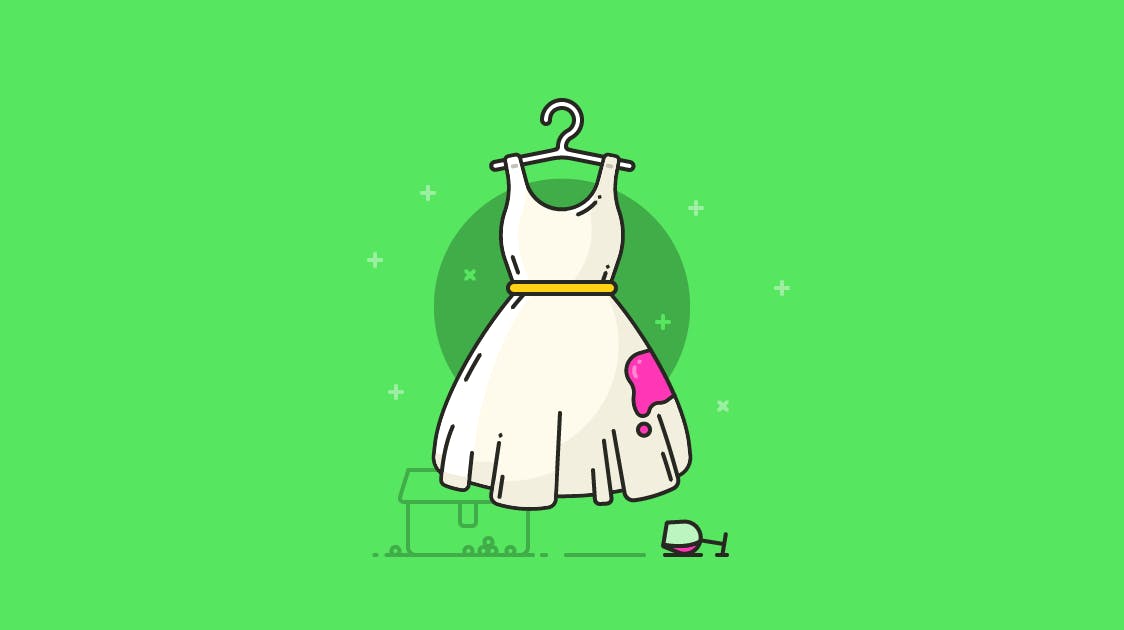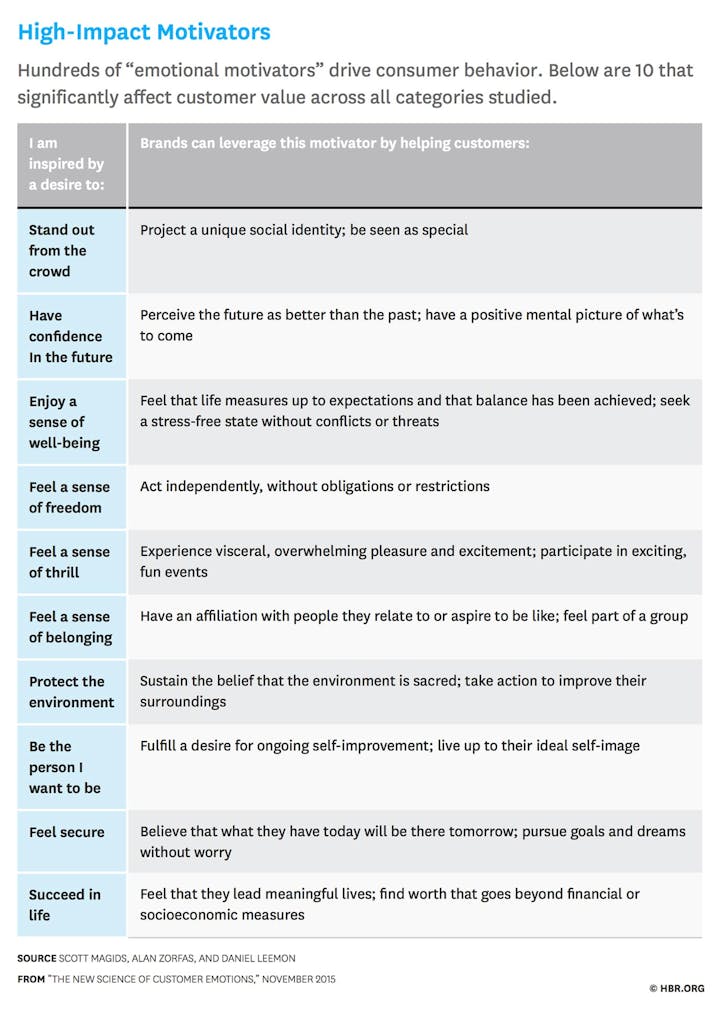The Psychology Behind the Perfect Customer Interview


This week, I canceled my subscription to a once-beloved online service.
I used to rave about this clothing rental subscription. Whenever I received a compliment, I told people exactly where I got my outfit from and said, “You should go home and sign up now!”
I was their dream customer.
But after nine months, I was ready to pull the plug. I pressed “cancel” and dutifully filled out the survey as soon as it hit my inbox. I told them why: My recent rentals were a bit tattered. I couldn’t find anything in my size I really wanted. And I was sick of dragging myself to UPS.
These answers gave clear information, but they didn’t get to the heart of why I ended my relationship with the company. In reality, I signed up because I wanted luxury. I wanted the feeling of walking into a five-star hotel in a big, expensive ball gown. When that dress came with a wine stain and a broken zipper, it just didn’t feel luxurious anymore.
Why customer interviews matter
If this company had sat me down for an interview, they would have learned a lot more than what I shared in a survey. This qualitative data would have given them insights into my emotional motivations, which is much more powerful than a list of rationalizations for my canceling the service.
Companies that invest in this kind of inquiry are rewarded with the deeper understanding they need to make long-lasting emotional connections with their customers. And there’s plenty of cutting-edge research from economists and psychologists that explains why these interviews matter oh-so-much.
Unravel false assumptions about customers
Most people think they know what they want — and companies think they know what their customers want, too. But that’s not the whole story. Limited by fill-in-the-blank or multiple choice questions, customers give information that reveals their attitudes (how they think they should behave) rather than behaviors (how they actually make decisions).
To debunk assumptions and find out what people really need, companies need to go beyond surveys and engage with their customers through interviews. Whitney Hess, a UX consultant, explains the value of these interviews:
If we don’t take the time to learn about the people we serve, we’ll never end up creating a solution that really makes their problems go away. We’ll just be creating a band-aid that will eventually stop working.
When that band-aid falls off, customers become dissatisfied like I did this year. Next, retention rates drop, which can baffle unprepared teams. Simon Moore, a consumer psychologist and consultant, offers a powerful example of this idea in action:
Thomas Cook, an international travel agency, noticed a significant drop in retention rates. After applying conventional methods with no success, they hired Moore and his company, Innovationbubble, to investigate the underlying cause of their retention issue.
Innovationbubble conducted one-on-one interviews and found a major disconnect between what travelers reported wanting and what they actually appreciated about being on vacation. Customers listed “adventure, excitement, and exploration” as their motivations for taking a vacation, but they actually wanted “comfort, security, and safety.”
The biggest predictor of whether a customer enjoyed their travel experience wasn’t how much fun they had, it was correlated with comfort: the cleanliness of the room, the fluffiness of the pillows, and even the problem-solving ability of receptionists.
Hard to believe, right?
By overturning assumptions and pinpointing customers’ behaviors in interviews, Moore helped Thomas Cook to rebuild the customer experience around the needs of clients.
Reveal a customer’s emotional motivators
Thomas Cook’s customers weren’t alone in making decisions based on their feelings.
Interviews are the fastest, most effective way to identify emotional motivators.
Harvard Business School professor Gerald Zaltman, who works at the intersection of psychology, business and linguistics, believes that 95 percent of purchasing decisions are informed by our unconscious minds.
In his book “How Customers Think: Essential Insights into the Mind of the Market,” Zaltman characterizes this part of the mind as a “wonderful, if messy, stew of memories, emotions, thoughts, and other cognitive processes we're not aware of or that we can't articulate.” As customers, we make decisions from that convoluted (and unexamined) place. Without the amygdalae — the instinctual part of our brain that generates emotions — we wouldn’t be able to make any decisions at all.
Monitor and benchmark your support
Help Scout’s reports are an easy way to track productivity and set expectations for every metric in your customer conversations.
Try for free
Once customers make a choice, they wrap justifications and rationalizations around the decision to make it seem acceptable to their rational brains. Although people don’t always understand this process, it’s extremely important that companies do, or they’ll miss the mark with every product or service they offer.
Zaltman recommends applying techniques from psychology and sociology in one-on-one interviews to identify these unconscious motivators. Through in-depth conversations, companies gain invaluable insights into the emotional experiences of a customer.
Make customers happy and fulfilled
These emotional motivators are the key to keeping customers happy and fulfilled. When companies connect the dots between their products and consumer behavior, they create meaningful customer relationships.
Alan Zorfas and Daniel Leemon undertook a two-year, interdisciplinary project that culminated in a list of 300 universal emotional motivators. These motivators guide human behavior, prompting every choice, from a quick purchase to a major investment. Unfulfilled, they’re the root of dissatisfaction, too.
During an interview, companies can identify the key emotions that drive customer decisions. These top ten motivators from Zorfas and Leemon are a good place to start:

Zorfas and Leemon’s work doesn’t stop there — they also prove the value of identifying and leveraging these motivators, from product development through customer service. When companies cultivate emotionally engaged customers, they experience organic, long-term growth:
These emotionally connected customers buy more of your products and services, visit you more often, exhibit less price sensitivity, pay more attention to your communications, follow your advice, and recommend you more – everything you hope their experience with you will cause them to do.
As important as it is to focus on an end-to-end customer experience, companies need to dig into the customers’ motivators to create a lasting relationship.
How to lead a customer interview
To benefit from these emotional insights, you need to get a customer to open up without misleading them. No one knows how to strike this balance better than journalists and psychologists, both of whom are trained to unfurl answers without manipulating the interviewee.
These techniques can help customers to translate their motivations, feelings and experiences into actionable feedback for a company.
Here’s your roadmap for insightful interviews.
Prompt an open-ended dialogue
Open-ended questions are the framework for a successful interview. They reach past the simple answers in surveys to capture the nuance of someone’s experience with a product or company. Write these questions in advance, and go over them the way you would for a job interview.
Because you’re trying to identify the “why” behind a customer’s choices, start with “why” questions:
Why were you drawn to this product?
Why are you having a problem?
Why did you reach out to customer support?
From there, make sure that your questions all start with why, who, what, where, when, or how. These formats yield more textured answers than yes or no questions.
Open-ended questions also yield “cleaner” answers. People are less mired by bias, which is inherent in multiple choice questions. Instead of asking “What did you like about this feature?” and including various options, “What was your experience with this feature?” leaves room for diverse (and possibly unexplored) perspectives.
Start wide and narrow in
Help Scout’s Tim Thyne recommends the “start wide and narrow in” approach to customer interviews — no matter what the conversation, begin with open-ended questions or requests that help you learn more about the customer without being so specific that it restricts your follow-up questions.
As a starting point, ask questions that will get the customer talking openly about their company, what they are looking for and why. Once the conversation has started it is easy to narrow in on specific items as it progresses.
Examples:
Can you give me an overview of Company X and what brought you to look at Help Scout?
Can you share with me a bit more about the team and how you support customers today?
When a prospect shares that their team has trouble getting back to customers quickly and often sends multiple replies, this opens the door for follow-up questions.
Examples:
How big is the team today?
What tool are you using to manage email?
When a prospect shares that they’re unhappy with their current solution, that opens the door for even further follow-up questions.
Examples:
What tool did you say you were using?
What specifically don’t you like about it?
When a prospect shares with you that the company is getting ready to scale and is looking to add process to support, that’s a great opportunity to dig deeper.
Examples:
That’s exciting! How many people is the company at today?
How many more teammates do you plan on adding?
How many of these will be support?
Practice active listening
The most effective way to gain trust in an interview is through active listening. According to the University of Chicago, there are three major components of this intentional practice:
1. Cognitive characteristics
Probing
Paraphrasing
Summarizing
When you probe with follow-up questions, paraphrased responses, and summarized feedback at the end of the conversation, you clarify the insights of the customer. This extra step gives the interviewee affirmation that you’re hearing them and an opportunity to expand or modify their answers.
During these conversations, it also helps to reflect the formality of language the customer uses in addition to the content itself. Drop jargon and take on a style that echoes the customer’s natural way of speaking, which disarms hesitant interviewees.
2. Affective characteristics
Focusing of attention
Acceptance
Empathy
When customers take the time to talk to you, they deserve your complete attention. Record the interview so you can be fully present. Likewise, it’s important to take a non-combative approach — any feedback, no matter how harsh, is relevant and useful.
Take on a posture of acceptance, as you would with a friend going through a hard time. When you mirror back the experiences of the customer, do so while consciously trying to feel the emotions behind their words.
3. Behavioral characteristics
Engaged and open body language
Your body says more than you think it does. Throughout the interview, maintain eye contact. Instead of crossing your arms or legs, take a relaxed position and keep your chest open. These subtle cues show that you’re relaxed, helping your customer to relax, too.
Adjust to the interviewee
When humans interact, they create a natural storytelling rhythm. One person tells a story, then another person tells a story. In interviews, you need to short-change yourself, focusing solely on the interviewee.
Talking about yourself lights up more of the brain than food and sex, so it’s more challenging than you think to give the interviewee the spotlight. Rather than switching back and forth, imagine there’s a spotlight on the person speaking. Your job is to make sure that spotlight is on the interviewee as much as possible.
Some interviewees will be excited to talk about themselves the entire time, and others will be difficult to engage. Rather than planning for a one-size-fits-all interview, adapt to the interviewee’s comfort level and personality. Before you respond to an answer, wait five seconds. This awkward silence encourages customers to fill the space and expand on what they shared (even if it seems like they’re finished speaking).
Keep in mind that even with the most gregarious customers, you still need to guide the conversation to meaningful insights that highlight their motivations. Just because a customer is outgoing doesn’t mean they’re more self-aware than an introvert.
Introduce metaphors
Gerald Zaltman suggests that interviewers get creative, prompting customers to access their emotional states by using metaphors. In his book How Customers Think: Essential Insights into the Mind of the Market, Zaltman talks about how imagery can help clarify the emotional motivators of a customer:
By inviting consumers to use metaphors as they talk about a product or service, researchers bring consumers’ unconscious thoughts and feelings to a level of awareness where both parties can explore them more openly.
This may seem totally out of your league, but it’s easier than you may think. Ask customers to describe an image that represents how they want to feel when using a product. If they are really frustrated with a customer experience, you can also ask them for an image that represents those feelings, too.
You may hear things like, “My experience with this software was so awful, I wanted to chuck it out the window,” or “Using this program feels like floating in a downhill stream — it’s so intuitive and easy to use.”
Although these details may seem impractical and disconnected from the product experience, they help clarify the feeling state that a company wants to tap into or avoid. From there, designers can create and adjust a product to hit that target, marketers can develop messaging around those ideas, and customer service personnel can reinforce those ideas.
Look for subtext
Subtextual clues, especially emotional subtext, are extremely telling. By paying attention to body language, the pace and tone of speech, and facial cues, interviewees can understand the feelings behind a statement. It gives a company more information about where to probe and, overall, the customer’s relationship with the company.
I always bring a simple notepad and pen to take notes. Quickly jot down observations — like a customer’s excited voice or an inferred comment — and the topic it correlates to in the conversation. I complement those handwritten observations with NoNotes, an app that records interviews and transcribes them for you into Word documents. From there, I listen to the interview while reading the transcript and looking at my observations. This extra step enables you to pick up on extra details you might have missed during the original conversation.
If your customers are the most important part of your company, you need to get to the heart of their motivations as people. As valuable as big data is for a product team, one-on-one interviews bring unprecedented depth and personal insights into the emotional connection between a customer and a company. Integrated, these qualitative and quantitative inputs can transform your relationships with customers, bringing engagement to new heights.
The Supportive Weekly: A newsletter for people who want to deliver exceptional customer service.